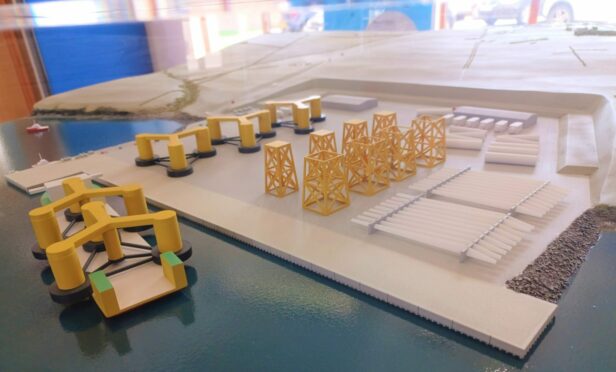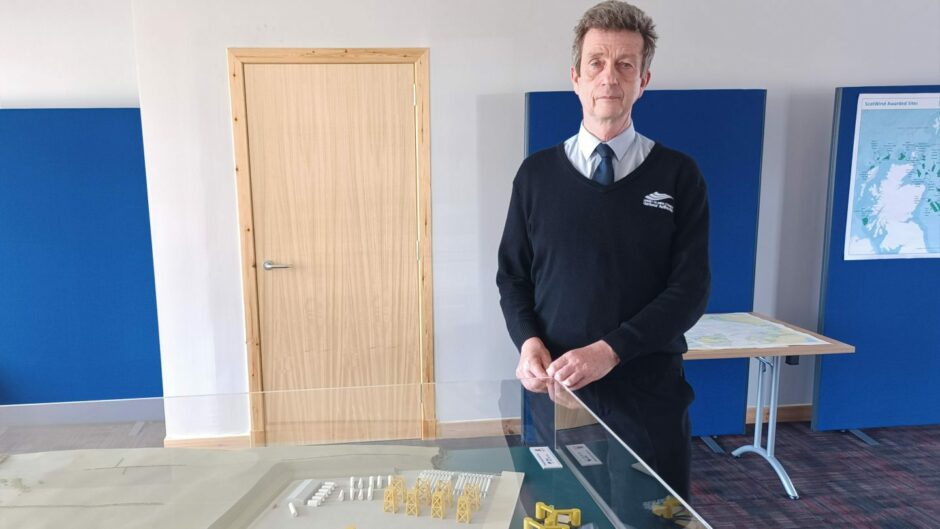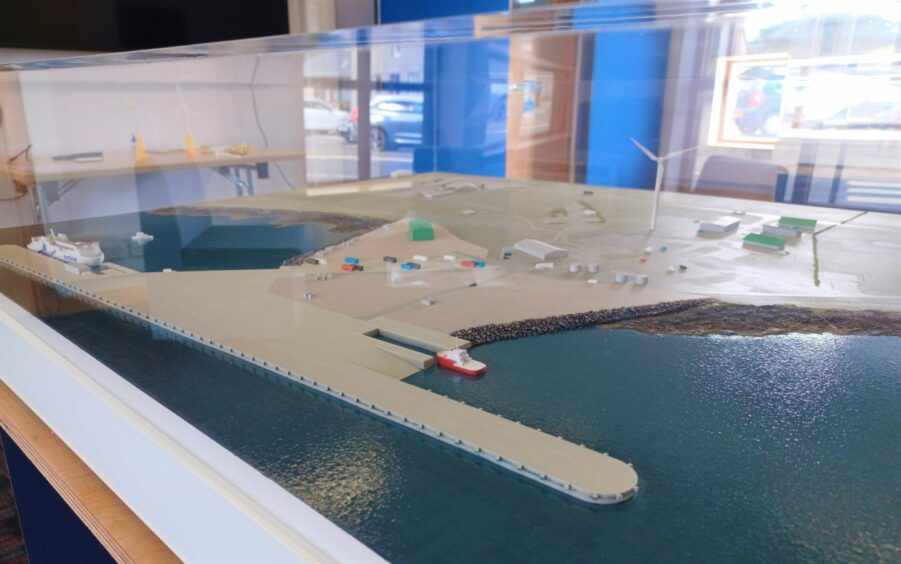Orkney Council’s Harbours Authority are giving the public a new view on phase 1 of the Orkney Harbours Masterplan.
1:1000 scale models have been set up in Kirkwall.
However, questions remain around the ambitious £230 million plans – particularly, who is going to pay for it?
The harbour authority has set up an Orkney offshore wind hub in the offices in Kiln Corner. Scale models of the logistics base with the proposed changes at Hatston Pier and the Scapa Deep Water Quay are the centrepieces of their display.
Phase 1 of Orkney Council’s plans would take place over a 20-year period and involve enormous infrastructure projects. The council says it would create jobs, revenue, and put Orkney at the forefront of a cleaner, greener future.
The changes at Hatston Pier and the Scapa Deep Water Quay are two projects out of five included in phase 1 of the masterplan.
World-leading maritime hub
Stromness and Lyness have also been earmarked for projects as part of phase 1.
The council has said these projects would open Orkney up as a “world-leading” maritime hub. This could play a major part in the offshore wind farms being planned around Northern Scotland.
If all goes to plan for the council, construction could start on phase 1 of Orkney’s Harbours Masterplan as soon as 2024.
David Sawkins is Deputy Harbour Master for Strategy & Support with the council’s Harbour Authority.
He said: “With these models, we’re putting images – instead of a flat piece of paper – to the public.
“What we really want to do is talk to the public now, rather than waiting until planning applications or environmental impact assessments are issued, which is when we’ll do official consultation.
“We want to show them what would happen, although these are only proposals at the moment. There are lots of hurdles to cross yet.”
Mr Sawkins said that many people in Orkney will be familiar with the size of the existing 900kW wind turbine at Hatston.
However, the scale models help people visualise how big the planned 18MW offshore wind turbines are compared to it.
The display even includes scale models of the NorthLink Ferries. One of the offshore wind turbines’ blades is nearly the same length as the MV Hrossey.
Granted, these offshore farms would be offshore, at the planned West of Orkney windfarm.
But where will the money come from?
As for where the money will come from he said: “We’re doing the financial strategy.
“We’ve told councillors that, by the end of the first part of next year, we will have a financial strategy. That strategy will say where the money is going to come from.
“We fully understand that, while there is lots of work going into this, people need to know where the cash is coming from.”
Mr Sawkins was asked about concerns the public has around phase 1 of the Orkney Harbours Masterplan.
He said: “One of the main concerns is the over-industrialisation of Scapa Flow.
“There will be large pieces of equipment being moved around by cranes, but that’s only temporary. You won’t have a crane left up all day long.
“Yes, there will be ships in Scapa Flow. But there have been ships in Scapa Flow since the mid-70s when Flotta opened.
“We’re working on images which will show that there will be more things happening and it’s not industrialisation per se.”



Conversation